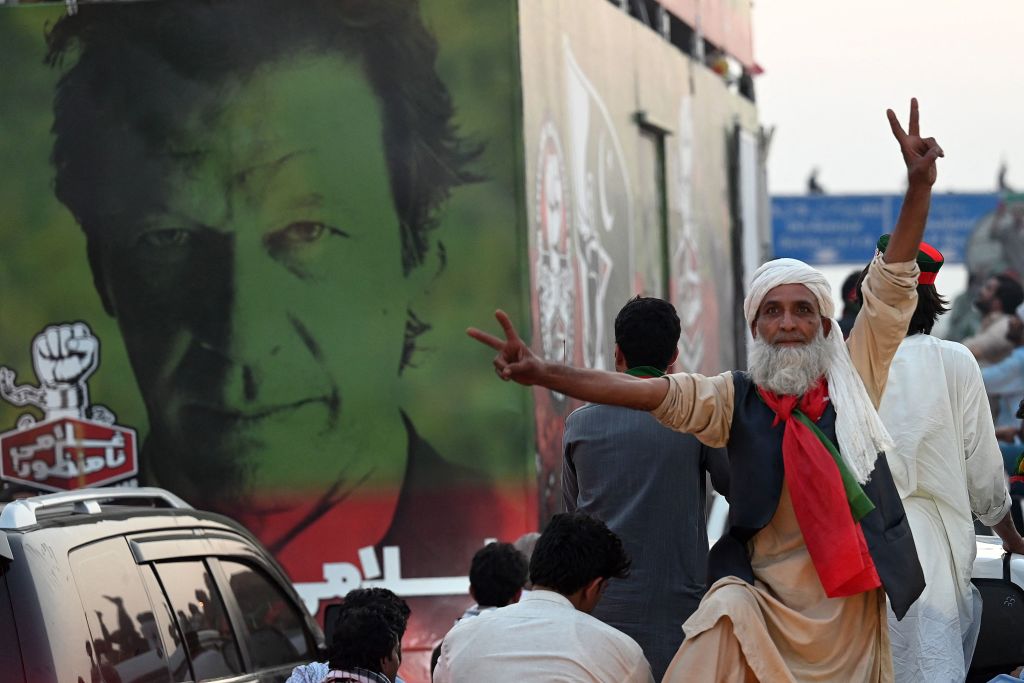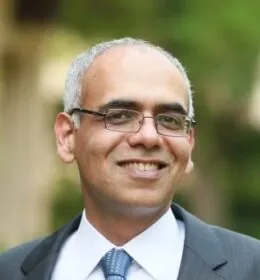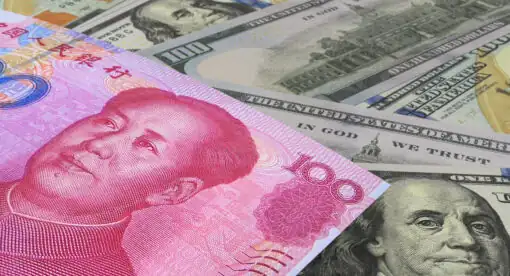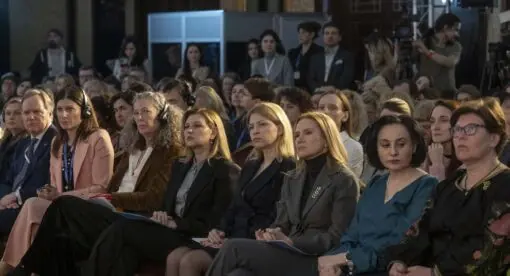After the ouster of Prime Minister Imran Khan in April, Pakistan is experiencing severe fragility, with its economy on the verge of collapse and its populace increasingly polarized. There are no quick fixes for contending with the complex and multifaceted challenges facing the country, and U.S. support remains vital to avert further destabilization in an already fraught region. However, instead of focusing on support for the political establishment U.S. policymakers should invest in endeavors to give Pakistani citizens a greater sense of security.
Challenges Confronting Pakistan
With a population of nearly 230 million people, nuclearized Pakistan remains a lower-middle-income country with lackluster economic growth prospects. It is ranked 154th out of 189 countries on U.N.’s Human Development Index, and it was among the top 10 countries hardest hit by climate change from 2000 to 2019. Having experienced long bouts of military rule, the country is plagued by varied institutional weaknesses, and the democratic process remains fragile. Moreover, Pakistan is situated in a hostile neighborhood due to contested borders with neighboring India and turbulent relations with Taliban-controlled Afghanistan. Pakistan is also having a difficult time preserving its ties with the U.S., while it also is trying to cement close geoeconomic ties to China within the context of the great-power rivalry unfolding across South Asia.
Since its creation in 1947 by the contested and bloody partitioning of the British colonized Indian subcontinent, Pakistan has fought several wars with its larger neighbor, India. Nuclearization of the Indian subcontinent in 1998 raised the stakes of another full-fledged war between the rival states, but it has not prevented several subsequent skirmishes.
Pakistan initially relied on Cold War alliances the South-East Asia Treaty Organization (SEATO) and Central Treaty Organization (CENTO) to secure U.S. military support to engage in an asymmetrical power rivalry with India. However, this relationship has experienced recurrent turbulence despite Pakistan playing an instrumental role in repelling the Soviet invasion of Afghanistan in the 1980s and then facilitating the U.S. intervention in Afghanistan after the Sept. 11 attacks. Pakistan increasingly began to view U.S. attempts to pressure the Pakistani military to do more against the Taliban as being insensitive to Pakistan’s regional insecurities, especially its fear that the U.S.-backed Afghan government had forged close ties with India. The increasing strategic alignment between the U.S. and India has caused additional consternation within Pakistan.
While Pakistan played an instrumental role in bringing the Taliban to the negotiating table with the US in early 2020, it had less success helping broker intra-Afghan talks in Doha. After the Taliban’s takeover of Afghanistan on the heels of the American pullout, Pakistan feared being made a scapegoat. While Pakistan has not officially recognized the regime yet, it maintains close ties with the Taliban.
Pakistan has experienced a spike in cross-border terrorist activities, which the Taliban seem unwilling or unable to clamp down on. A recent U.N. report has specifically highlighted the direct threat posed to Pakistan by the Tehrik-e-Taliban Pakistan, a terrorist group which aspires to turn Pakistan into a Taliban-styled state. Pakistan has used the Taliban to broker a second cease-fire deal with the militants, and it continues to advocate for the international community to collaborate with the Taliban. Pakistan does justifiably fear that the ongoing isolation of the Taliban regime and the increasing desperation of the Afghan people will trigger another massive refugee influx, which resource-constrained Pakistan would be hard-pressed to host.
The unfolding great-power competition in the region is further complicating the strategic balance in the Indian subcontinent. While progress on the $62 billion China-Pakistan Economic Corridor is moving slowly due to varied implementation hurdles and a worsened security situation, China has also become the foremost supplier of military hardware for Pakistan. The U.S. remains wary of the growing Chinese influence in Pakistan, even if much of this increased Pakistani reliance on China is being driven by Washington’s own reluctance to support Pakistan, as well as the growing military and economic cooperation between India and the U.S.
Pakistan’s political future is uncertain. While economic mismanagement and governance failures helped the opposition succeed in removing Khan from office, the former prime minister has managed to portray himself as a victim of a U.S. regime-change conspiracy, and he is trying to harness widespread post-9/11 anti-U.S. sentiment to call for early elections and win another term in office. Meanwhile the military, which was instrumental in enabling Khan’s hybrid regime to assume power in 2018, seems reluctant to take on the onus of steering the country through a tough period of economic turmoil. The incumbents are desperately trying to resume a stalled $6 billion IMF loan to avert default, which would pave the way for getting additional help from traditional allies like Saudi Arabia and China. Yet the ruling coalition has different positions on whether to hold early elections, especially after implementing strict austerity measures such as removing fuel subsidies that are placing further pressure on already struggling Pakistani households.
The prevailing political turbulence in Pakistan has caused alarming polarization between different political parties and among their supporters. This stressful socio-political environment is further distracting from the urgent, more practical needs of the day: the dire economic situation, the increasingly severe climate impacts, and the resurgence of terrorism.
How U.S. Policymakers Can Support Pakistan
Pakistan’s socio-political and economic problems will not be easily resolved, no matter which political party assumes the reins of power. Pakistan needs to transcend its colonial legacy of relying on a top-heavy bureaucracy and patron-client relations, which have enabled military regimes and democratically elected authoritarian leaders alike to rule over a hapless and underrepresented citizenry.
U.S. policymakers should adopt a Pakistan strategy that transcends the need to forge a personal rapport with individual rulers and instead creates a more durable basis for bilateral engagement. The relationship between Pakistan and the U.S. has become increasingly transactional, with the U.S. using Pakistan to facilitate its own strategic imperatives in Afghanistan, first near the end of the Cold War and then after 9/11. The Pakistani military establishment has been at the forefront of managing the U.S.-Pakistani relationship, which in turn has enabled it to utilize American aid to perpetuate decades of military rule. While Pakistan needs to play a useful role to play in averting destabilization in Afghanistan after the pullout of NATO troops, the U.S. must transcend its security-dominated bilateral engagements with Pakistan and instead focus on innovative, feasible pathways to build a more sustainable and human-centric relationship.
It is encouraging to note that a new U.S. ambassador to Pakistan has recently arrived in Islamabad, four years after the departure of his predecessor. The appointment coincided with massive rallies being orchestrated by Khan aiming to pressure the establishment to hold early elections. While Khan’s accusations of an American ploy to orchestrate regime change are far-fetched, the U.S. shares part of the blame for working with, and hence helping perpetuate, the rule of several problematic Pakistani leaders to achieve its own strategic objectives.
While the U.S. has been warning Pakistan of predatory Chinese lending, much of the development aid provided to Pakistan via bilateral and multilateral lending agencies (like the IMF and World Bank, over which the U.S. exercises considerable influence) has also produced lackluster results. Instead of wealth “trickling down” from the top, the largest share of the benefits of growth have been enjoyed by the elite. Despite the proclaimed efficiencies of market mechanisms, Pakistan remains afflicted by stark levels of deprivation and inequality which neo-liberal policies will not automatically fix.
The current moment offers an opportunity to rethink and reset this longstanding, troubled relationship. Paying more heed to human security imperatives will offer prospects to further key U.S. strategic priorities of averting regional conflict, promoting economic cooperation, contending with climate change, and preventing militant groups with global ambitions from regaining a foothold in this region.
Instead of primarily aiming to revitalize its security-dominated relationship, the U.S. needs to show foresight and reflexivity in how it engages with Pakistan. The U.S. has developed a strong bilateral relationship with India for furthering a largely adversarial effort to contain Chinese influence in the region, but this does not imply that it can entirely abandon its longstanding relationship with Pakistan. U.S.-Pakistani ties can coexist with Pakistan’s closer ties to China. In fact, Pakistan is in a unique position to offer the U.S. a neutral space to constructively engage with China, such as enabling U.S. businesses to avail themselves of opportunities provided by Chinese-funded infrastructure projects, including the newly created Special Economic Zones being created via the China-Pakistan Economic Corridor, which could help bolster Pakistan’s economic performance and offset Pakistan’s increased economic dependence on China.
The U.S. cannot impose a solution to the Kashmir conflict, which remains the primary source of tensions between India and Pakistan, given India’s refusal to allow third-party mediation. However, India’s revocation of the special status of Jammu and Kashmir in 2019 has raised the chances of renewed conflict over contested territories not only between India and Pakistan but also between India and China, whose soldiers clashed for the first time since 1962 in the Galwan valley in 2020.
Climate change in the form of the ongoing glacial melt in the region has the potential to worsen relations between regional states that share transborder glacial waterways, which flow across hotly contested political borders. Pakistan remains engaged in an expensive rivalry with India, which may intensify due to growing climate threats such as water insecurity. With its emphasis on combatting climate change, the Biden administration can play an important role in furthering climate mitigation and even environmental diplomacy across the Himalaya-Karakoram-Hindukush mountain ranges shared by Pakistan, India, Afghanistan, Bangladesh, and China. The U.S. already played a proactive role in encouraging the World Bank to broker the Indus Water Treaty between India and Pakistan in 1960, which has stood the test of time despite wars and skirmishes between the two. However, this treaty now needs to be revised or even reformulated given growing population pressures and the impending threat of a climate induced glacial melt.
Investment in some of the above identified efforts is not as expedient as providing more assistance to the Pakistani military or channeling more international grants and loans to exercise leverage over the current government by helping to keep it afloat. Nevertheless, it is human-centric investments that are desperately needed in Pakistan. The U.S. government’s willingness to invest in such possibilities could help repair its tarnished image in Pakistan. It would also serve other meaningful goals like promoting broader regional cooperation and enhancing the capabilities of the Pakistani state and its institutions to meet the basic needs of average Pakistanis.
Dr. Syed Mohammed Ali is a professor of anthropology, international development, and human security courses at Johns Hopkins, Georgetown, and George Washington universities. Dr. Ali has two decades of experience working on major international development challenges including governance problems, issues of marginalization, and natural and man-made disasters. Ali is the author of Development, Poverty and Power in Pakistan: The Impact of State and Donor Interventions on Farmers (Routledge, 2015).
The views expressed in this article are those of the author and not reflective of an official policy or position of the New Lines Institute.






